Le Panzerfaust
English Translation.
Introduction Cette arme a été mise au point en 1942 par la firme HASAG à Leipzig
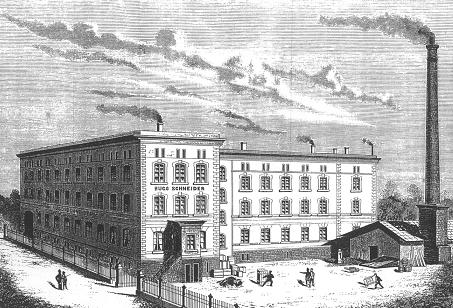 |
| Usine Hugo Schneinder (Hasag ) au XIX° siècle (source internet ) |
Le Panzerfaust est une arme anti char de premier ordre mise en oeuvre par les équipes anti char allemande durant la 2° Guerre Mondiale .Cette arme était petite légère Facile à produire mais surtout cela est important très efficace. En effet elle était capable de pénétrer près de 200mm de blindage, mettant ainsi hors de combat tout char en service. Cette arme avait reçu le surnom panzer Faust (poing blindé ou diable blindé).
L’étude de cette arme débute sur le constat que m’infanterie doit avoir une arme antichar simple légère et puissante capable de détruite un char en combat rapproché ; De plus cette arme doit être consommable. Les études ont débouché sur la création d’arme de divers calibre Ainsi sont né les Panzerfaust de 30 60 100 et 150. Toutes ces armes avaient un point commun : Le fait de pouvoir pénétrer 200mm sous un angle de 90 °. Les modèles étaient différents seulement sur la portée ; En effet le Panzerfaust 30 n’était efficace qu’à une portée de 30 m alors que le Panzerfaust lui avait une portée de 150 m
Genèse de l arme
Il fallait doter rapidement les soldats d’une arme anti char individuelle qui soit en mesure de casser du char. Pour ce faire les ingénieurs durent utiliser 2 systèmes pour en faire un
pour résoudre l’équation suivant Pour percer le blindage du char il faut une arme dérivée d’une roquette et celle ci doit être tire par un tire exploitant les possibilité du canon sans recul tout en restant assez légère pour être utilisé par un fantassin
Il faut donc mettre au point une arme ressemblant à une grenade tirée par un tube reprenant les techniques de canons sans recul.
Les études furent rondement menées ainsi nous assistons en 1942 à la mise au point par le professeur Langweiter de la société Hugo Schneider a installé à Leipzig Cette société est connue sous le nom de HASAG. En effet l’entrée en scène du T. 34 bouleversa la donne lors du début de l’offensive Barbarossa en Russie. Les Allemands se rendirent compte que seul le 88 pouvait venir à bout de ce char Rapidement les études furent lancées pour contrer cette menace et une arme prometteuse vit jour Le Panzerfaust .En 1943 voit l’apparition du premier Panzerfaust Klein e qui a été immédiatement remplacé par un type beaucoup plus gros. Le tireur devait toutefois s’approcher le plus près possible du blindé ennemie et avoir une position de tir adapté en effet il devait tenir le Panzerfaust correctement pour éviter le retour de flamme Pour mettre au point son arme le professeur étudie à l’effet Monroe plus connu sous le nom de charge creuse. L’intérieur de la charge explosive a la forme d’un cône revêtu de cuivre. Une ouverture orientée vers l’avant oblige lors de la détonation la charge militaire à être orientée vers le point d’impact propageant ainsi un jet de métal en fusion Ce mélange de gaz et de métal en fusion est trop projeté vers le char à une vitesse de plus de 6000 mètres secondes. Le dard perforant le blindage propage à l’intérieur du char un mélange gaz et de fer en fusion qui entraîne la destruction du char par l’explosion interne des munitions
L arme adopté est alors fabriquée par la firme VW Weber de Fallersleben à la cadence de 200 000 unités par mois
Description de l arme
Elle se présente en 2 parties un tube et un projectile. L’ensemble mesure environ 1.04m et pèse 5 Kg
Par la suite les versions plus puissantes comme le Panzerfaust 100 atteindront le poids de 6.8 Kgs mais la forme et la longueur de l engin resteront la même
Le projectile
Il se présente comme un gros obus de forme ovoïde sur lequel un tube a été greffé. Des ailerons stabilisateurs se déploient dès que le projectile est sorti de tube de lancement. Le projectile s’arme automatiquement après 5 mètres de course A l impact le projectile, contrairement à un obus classique qui lui pénètre le blindage en utilisant l’énergie cinétique, s’écrasé sur la blindage et envoie un dard enflammé qui fond le blindage et pénètre dans le blindé, le détruisant presque toute le fois par un incendie interne. C’est le principe de la charge creuse qui crée lorsque l explosion un dard de métal en fusion créant une poche de gaz qui explose à la vitesse de 8000m/secondes avec une pression de plus de100 t/ cm2. Cette boule de gaz en un espace confiné comme une tourelle de char provoque des dégâts mortifères. Les ailerons sont là pour stabiliser la charge lors du tir car le projectile tourne sur lui-même ce qui provoque une impression du tir. Les deux défauts majeurs de cette arme sont donc basse V° et imprécision du projectile, Aussi les conseils pour l utilisation de cette arme sont qu’elle ne doit être utilisée qu’ courte portée et sur une cible de taille assez importante. La puissance de la tête n’est pas mise en question car elle est efficace à n’importe quelle distance ; ce qui est mis en cause c’est la précision du tir
Le projectile a un diamètre de 14cm il mesure 49.5cm de long et pèse 2.9kg La tête de guerre pèse 0.8 Kgs et elle est composée d’un mélange de TNT et de RDX sur la base de 50/50. Le projectile est disponible en version 30, 60, 100 and 150 .Selon les versions la vitesse du projectile passe de 30m /secondes à 85 m
Le tube de lancement du Panzerfaust
Le tube de lancement du Panzerfaust se compose du cylindre dans lequel a été placé de la poudre qui doit servir de propulseur. La mise a feu est assurée par une cartouche qui agit lors de la percussion comme un silex en provoquant des étincelles qui enflamment la poudre .l ‘explosion de la poudre provoque une poche de gaz qui propulse le projectile hors du tube grâce à l’énergie cinétique. Le retour de flammes est très important et non contrôlable .Il peut provoquer des blessures graves dans un rayon de 3 mètres au dos ou les épaules
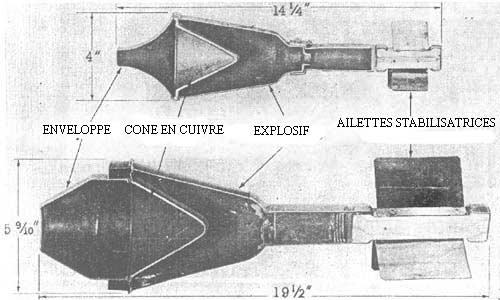 |
| Ecorchés de tete de Panzerfaust (source Internet ) |
Cette arme ne doit pas être utilisée dans un endroit clos ou avec un obstacle derrière soi
Un simple guidon mobile de pointage est fixé sur le tube. Celui-ci est relevé avant le tir. Ce guidon possède une série d encoches permettant le calcul de la visée. Par exemple, le Panzerfaust 100 a des visées pour 30, 60, 80 et150 mètres. Pour atteindre une cible à 30 mètres il, doit voir sa cible s’encadrer dans le trou prévu pour 30metres.il fallait ensuite tenir compter de la vitesse probable de l engin et du temps de course du projectile jusqu'à sa cible si celle-ci était mobile. Il fallait donc prendre compte ces paramètres. Il y avait une sécurité sur le gâchette pour éviter tout accident de tir
Le Panzerfaust a été considéré comme une arme simple et efficace pouvant être mise en œuvre par n’importe quel soldat. Mais cette simplicité a eut des effets pervers peu ou pas d’entraînement. Pour les états major les explications portées sur l’arme étaient suffisantes ainsi que les consignes de sécurité qui se résumaient seulement à une étiquette collée sur l engin avec écrit en lettres grasses “Achtung! Feuerstrahl!” attention jet de flamme
La production totale des Panzerfaust se compte en millions. Toutefois la version la plus produite fut le Panzerfaust 60.Celui ci bien qu’il soit peu à peu remplace par le Panzerschreck, il resta en service jusqu’à la fin de la Guerre. Le développement des différent s projets sont alors arrêtés.
Le Panzerfaust était transporté dans des caisses en bois renfermant chaque une ,4 armes Léa pénurie de matières premières entraîna l’étude de Panzerfaust réutilisables avec la série de Panzerfaust 150 et 250
Utilisation au combat
Le Panzerfaust prouva son efficacité sur divers théâtres d’opérations Durant la bataille de Berlin, beaucoup de troupes armées seulement de Panzerfaust tinrent tête aux chars russes. LE Panzerfaust est l’ancêtre des RPG (rocket Propelled grenade) actuels.
Séance de tir
mode d’emploi.
1° chercher un lieu propice aux tirs avait aucun obstacle derrière le tireur ou du moins à plus
de 3 mètres
2° Armer le Panzerfaust en introduisant la roquette à la faisant glisser dans le tube. La roquette est alors verrouillée par de ergots qui retiennent sa tête
3°Regarder au centre du tube il y a un mécanisme qui protège la détente .Le faire pivoter vers le haut il devient ainsi organe de visée et libère la sécurité de Panzerfaust Attention si vous baissez votre arme vers le bas la charge risque de tomber à terre .Toutefois en théorie elle doit pas exploser.
4°Prendre la visée Le tube doit passer sous l’aisselle fermement maintenu par le bras droit les gauchers vous débrouillaient avec l’autre bras. Vous pointez alors le tube vers le char en dégageant un petit peu le tube du buste pour éviter l’effet de souffle .Votre main gauche tient fermement le tube par en dessous. Vous pencher la tête pour prendre la visée et vous tirez
5° Une fois le tir effectué vous jetez l’arme et vous prenez la poudre d’escampette.
Ceci est la manœuvre enseignée par les manuels il existe toutefois une autre technique.
Vous êtes assis derrière un tas de gravats toujours sans obstacle derrière
Vous avez les jambes repliées et le bras et le coude gauche reposants sur le genou gauche le buste est légèrement incliné vers l’avant vous offrez alors le minimum de cible et de vous pouvez tirer en toute tranquillité
Comment cela marche:
Des croquis valent mieux qu'un discours
C'est le principe d'un dard en fusion qui penêtre un blindage
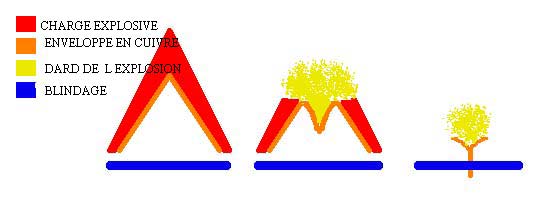 |
 |
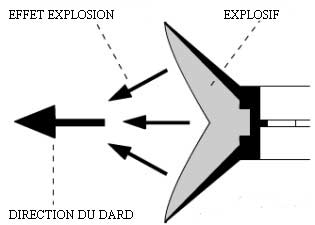 |
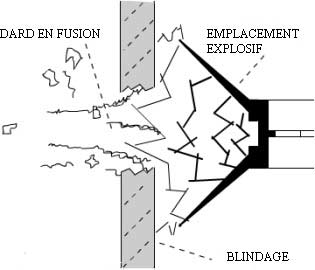 |
| Phase 1 : Au départ |
Phase 2 : liberation dard à l 'impact |
Phase 3 :effet sur le blindage |
les parades au Panzerfaust
Les équipages de chars ont développé des parades au Panzerfaust Ils ont rapidement réagi en rajoutant des protections supplémentaires au blindage : sacs de sable poutres en bois sommier de lit
mais ces protection ne valaient que pour les parties vitales du char car si le Panzerfaust touchait une chenille celui-ci était immobilisé. De plus les troupes soviétiques ont mis au point une tactique visant à faire manœuvrer les chars appuyés par de l’infanterie ce qui est augmentait les difficultés pour les casseurs de chars
Versions du Panzerfaust :-
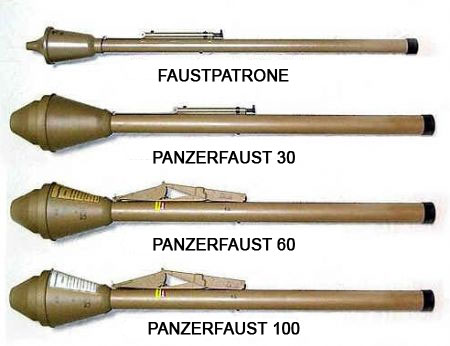 |
| Diverses versions Panzerfaust (source Internet ) |
Panzerfaust 30 Octobre 1943.
Panzerfaust 60 Septembre 1944.
Panzerfaust 100 Novembre 1944.
Panzerfaust 150 Mars 1945. Introduit en petit nombre Il se présente comme un Panzerfaust avec une poignée avec tube réutilisable
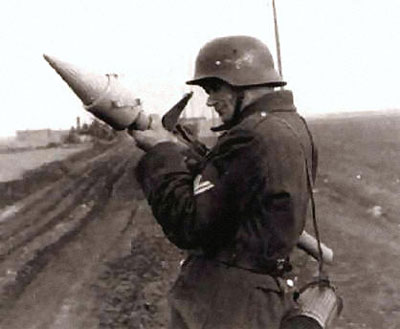 |
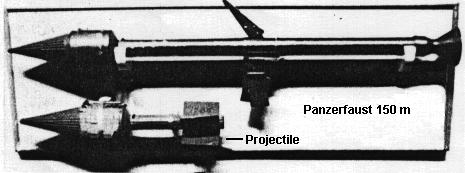 |
| Panzerfaust 150 (source Internet ) |
Panzerfaust 150 projectile(source Internet ) |
Projets de Panzerfaust (Kleinrakete zur Infanteriebekämpfung )
Panzerfaust 250 Version réutilisable en développement à la fin de la guerre il aurait du entrer en service en septembre 1945
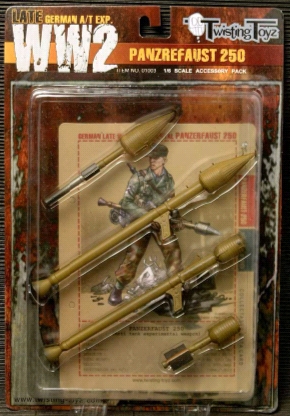 |
.jpg) |
| Panzerfaust 250 (en maquette ) |
Panzerfaust 250 |
Grosse Panzerfaust / Hecht 10,5cm
début de 1945 des rumeurs signalent l’entrée en service d’un nouveau engin anti char le Schtschuka""Pike" basé sur le Panzerfaust 250)Cette arme pouvait percer 40 cm de blindage,
Schrappnellfaust ("Shrapnel Fist"), cela aurait du être un Panzerfaust réutilisable d’un poids de 8 kgs d’une portée de 400 mètres
Versions anti aériennes (sur avions )
Luftfaust-A à 4 tubes d’un calibre de 2cm .
Luftfaust-B à 9 tubes d’un calibre de 150 mm 80 engins furent envoyés
Fliegerfaust ("airplane fist") 6 tubes de 3 cm utilisant les projectiles du canon Maschinenkanone MK108 fixé sur le Me262 .Ne dépassa pas le stade des essais
Caractéristiques de l arme
Constructeur HASAG
Calibre 100mm
Portée 30 60 100 150 et 250 mètres
Poids type 30 5.2 Kgs Type 60 6.8kgs
Perforation 200mm de blindage
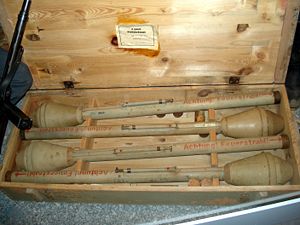 |
| Conditionnement du panzerfaust |
Autres Photoscopes Others Walk Around
Panzerfaust 60 Saumur
Panzerfaust 60 Draguignan
Panzerfaust 60 Bayeux
.jpg) |
| Die Götterdämmerung Berlin Mai 1945 |
Autres Photoscopes Others Walk Around
Panzerfaust 60 Saumur
Panzerfaust 60 Draguignan
Panzerfaust 60 Bayeux
Panzerfaust 60 Le Grau d 'Agde 2024
The Panzerfaust
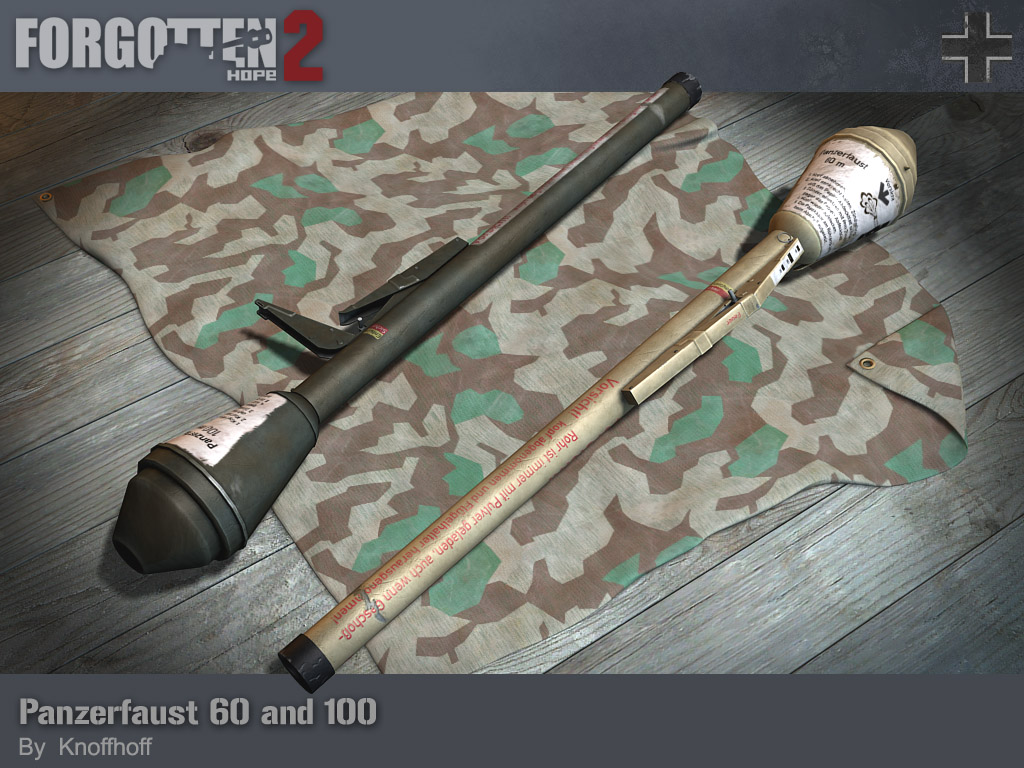 |
| Internet |
Introduction
This weapon was bring into focus in 1942 by HASAG corporation in Leipzig
 |
| |
The Panzerfaust was a good weapon used by German anti tank teams during 2 ° World war .
This weapon was small light easy to produce but especially it is important very efficient.
In effect it was able of penetrate near 200mm of armour plating, putting any tank in service KO.
This weapon had accepted the nickname panzer Faust (armoured fist or armoured demon). The study of this weapon starts with the official report that infantry must have a weapon antitank simple light and powerful able of destroying a tank in close combat
Of more this weapon must be consumable. Studies resulted in the creation of weapon of various calibre
So were born Panzerfaust 30, 60, 100 and 150.
All this weapon had a common point: able to penetrate 200mm under an angle of 90 °. Models differed only on range;
In fact Panzerfaust 30 was efficient only in a range of 30 m while Panzerfaust had him a range of 150 m
Origin of the Panzerfaust
It was necessary to equip the soldiers with an individual anti tank weapon able to put KO any tank in service
In order to do that the engineers had to use 2 systems to make one
To resolve this equation (piercing the armour plating of the tank ) the future weapon will be issued from a rocket and she would be fire by king of tube like a gun ‘s barrel without recoil but remaining rather light to be used by an infantryman
It is therefore necessary to bring in focus a weapon similar at a grenade drawn by a tube taking back the techniques of gun without recoil.
Studies were promptly led so in 1942 the weapon is ready. The professor Langweiter of the society Hugo Schneider installs society in Leipzig . So this corporation is know as HASAG.
In effect the apparition of the T. 34 it’s a problem and a nightmare for Germans during the beginning of offensive Barbarossa in Russia. The Germans realized that alone 88 can put KO this tank
Fast studies were thrown to counter this threat and very quickly a new weapon is imagined This weapon is the Panzerfaust
1943 sees the first appearance of the Panzerfaust Klein which was immediately replaced with a much bigger type.
The sniper nevertheless had to go up most near possible of the armoured vehicle enemy and to have a good position of shooting adapted in effect he had to hold Panzerfaust correctly to avoid the return of flame
To perfect his weapon the professor’s team studies the Monroe effect more known under the name of hollow charge. The inside of the explosive load has the form of a cone dressed in copper. An opening orientated forward makes during detonation the military load be orientated to the point of impact spreading a metal throw so in fusion
This mixture of gas and metal in fusion is too much cast towards the tank at a speed of more than 6000 metres seconds. Perforating sting the armour plating spreads a mixture inside the tank gas and of iron in fusion which draws away the destruction of the tank by the internal explosion of ammunitions
This Weapon was adopted and fabricated by VW Weber corporation of Fallersleben in the rhythm of 200 000 units/month
Description of the weapon
It comes in 2 parts : a tube and a projectile. The weapon has 1.04m weighs 5 Kg wight
Later more powerful versions as Panzerfaust 100 will reach 6.8 kg weight but form and length of hull will remain the same
The projectile
It comes as a big bomb of ovoid form on which a tube was grafted. Stabilizing wing tips fan out as soon as the projectile went out of tube of launching. The projectile arms itself automatically after 5 metres of running
In the point of impact the projectile, contrary to a classical bomb which penetrates into the armour plating by using kinetic energy, crushed on armour plating and sends an ignited sting which melts the armour plating and enters the armoured vehicle, like a fire ball ,destroying it by an internal fire.
It is the principle of the hollow charge .The explosion create whit the metal in fusion a pocket of gas which blows up at the speed of 8000m / seconds with a pressure furthermore de100 t / cm2.
This bowl of gas confined in a little space as a turret of tank induce deadly damage.
Wing tips are there to stabilize the load during shooting because the projectile turns on itself it This rotation induces imprecision of shooting. Both major defects of this weapon is therefore low V °
Also advices for the use of this weapon are clearly
She must be used in short range and upon an important target . The potency of the warhead is not appraised because it is efficient at any distance. The only problem is the precision of shooting
The projectile has a diameter of 14cm it am 49.5cm long and weigh The war head 2.9kg weigh 0.8 Kg and it is composed by a mixture of TNT and RDX on the ratio of 50/50.
The projectile is available in version 30, 60, 100 and 150 .According to the versions the speed of the projectile is 30m / seconds at 85 m
The tube of launching of Panzerfaust
The tube of launching of Panzerfaust is a cylinder in which been put by the powder which must act as propeller. The ignition is assured by a cartridge .The ignition of the power make a gas pocket which projects the projectile out of the tube thanks to kinetic energy.
The return of fire is very important and not controllable . If you have not 3 meters behind you it is forbidden This weapon should not be used in a closed place or with an obstacle behind you
 |
| |
A simple mobile handlebar of checking is fixed on the tube. This one is raised before shooting. This handlebar has a series of notches allowing the aiming
For instance, Panzerfaust 100 has aiming as 30, 60, 80 et150 metres. To hit a target at 30 metres we, must see the target being framed in the hole for 30metres.
But you cant also need upon the probable speed and the time of running of the projectile between you and the target It was necessary to take count these parameters.
There was a security on tumbler to avoid any accident of shooting
Panzerfaust was considered to be a simple and efficient weapon . also he can be used by any soldier.
But this simplicity has had perverses effects upon not harden soldier For the authorities explanations carried on the weapon were sufficients " Achtung! Feuerstrahl! " attention throw of flame
The complete production of Panzerfaust is counted in millions. Nevertheless the most produced version was Panzerfaust 60. In the end fo the war it was remplaced by the Panzerschreck, but he stayed in service still to the end of War.
Panzerfaust was transported in wooden cases with 4 weapon
The scarceness of raw materials drew away the study of Panzerfaust wich can be re-used with the series of Panzerfaust 150 and 250
Use to battle
Panzerfaust figth on various theatres of operations During the battle of Berlin, many troops armed only with Panzerfaust stood up to the Russian tanks. Panzerfaust is the forefather of the actual RPG (rocket Propelled grenade)
Shooting instructions.
1 ° to search an place advantageous for shooting without any obstacle behind the shooter or at least in more than 3 metres
2° to Arm Panzerfaust by introducing the rocket in making it slip into the tube. The rocket is then locked by of ergots which keep the head
3° Aim by locking in the hole of the sighting. Attention if you lower your weapon downwards the load risks falling to earth .But in theory she must not blow up.
4°Prendre aim The tube must pass under the armpit firmly supported by the right arm .For the left-handed persons manage you with the other arm
5° After the shoot you go away quickly.
This is the drill explain by the TM (Tactical manual )
In the fact you have and another method. You are sitting down behind a heap of rubbles always without obstacle behind You have the folded up legs and the arm and the left elbow peaceful on the left knee the chest is lightly tipped up forward you give the minimum of target then and of you can pull with complete peace of mind
Explications by drawing
Drawings are better than a speech (Napoleon)
 |
Parries to the Panzerfaust
The tank crews have developed parry to Panzerfaust
He wild be stopped the Blow charge by additional protection in the armour plating: (bags of sand wooden beams base of bed ) but this protection were worth only for the vital parties of the tank because if the Panzerfaust touched a caterpillar the tank is immobilized.
More the Soviet troops put in the point a tactics The infantry go away in the same time of the tanks
 |
.jpg) |
| PanzerFaust 250 |
PanzerFaust 250 |
Versions of Panzerfaust:-
Panzerfaust October 30th, 1943.
Panzerfaust September 60th, 1944.
Panzerfaust November 100, 1944.
Panzerfaust 150 march 1945. Introduced in small number He comes as Panzerfaust with a handle with re-used tube
 |
 |
Projects of Panzerfaust (Kleinrakete zur Infanteriebekämpfung)
Panzerfaust 250 re-used version in development at the end of war he would be enter in service in September, 1945
Grosse Panzerfaust/ Hecht 10,5cm at the beginning of 1945 rumours signal the entrance in service of a new device anti tank Schtschuka " " Pike " based on Panzerfaust 250) This weapon could pierce 40 cm of armour plating,
Schrappnellfaust (" Shrapnel Fist "), it would have of the being re-used Panzerfaust
8 kg weighty of a 400-metre range
Anti arcraft versions(based on planes)
Luftfaust-A 4 tubes of a calibre of 2cm.
Luftfaust-B 9 tubes of a 150 mm 80 weapons were utilised
Fliegerfaust (" airplane fist ") 6 tubes of 3 cm using the projectiles of the cannon Maschinenkanone MK108 fixed on Me262 .only tries stages
Specifications
Constructor HASAG
Calibre 100mm
Range 30 60 100 150 and 250 metres
Weight panzerfaust 30 5.2 Kg Panzerfaust 60 6.8kgs
Perforation 200mm of armour plating






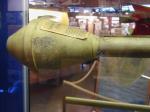
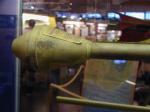
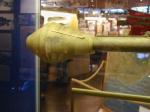
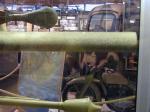
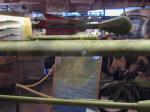
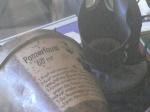










.jpg)

.jpg)